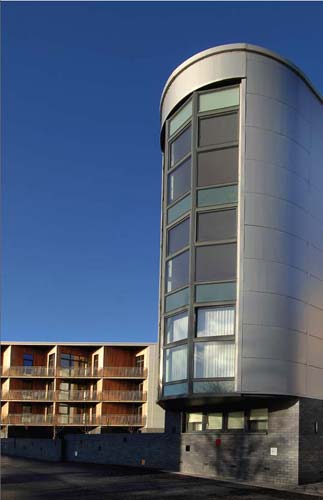National Planning Framework for Scotland 2
Long term spatial strategy for Scotland's development.
SCOTLAND - 2030
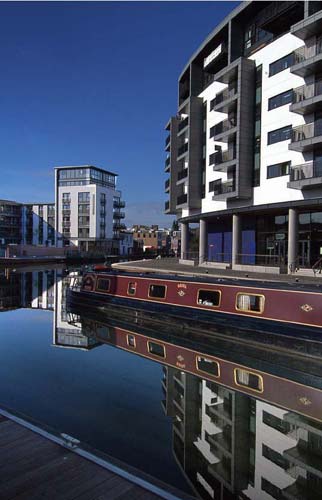 44. The key aims of the strategy for Scotland's spatial development to 2030 are:
44. The key aims of the strategy for Scotland's spatial development to 2030 are:
- to contribute to a wealthier and fairer Scotland by supporting sustainable economic growth and improved competitiveness and connectivity;
- to promote a greener Scotland by contributing to the achievement of climate change targets and protecting and enhancing the quality of the natural and built environments;
- to help build safer, stronger and healthier communities, by promoting improved opportunities and a better quality of life; and
- to contribute to a smarter Scotland by supporting the development of the knowledge economy.
A GROWING ECONOMY
45. Higher sustainable economic growth is the key priority and the approach to achieving that is set out in the Government Economic Strategy ( GES). The Government is determined that growth should benefit the whole of society and should not come at the expense of our environment. It is committed to increasing wealth throughout Scotland and to reducing regional disparities. It has set the target of narrowing the gap in participation between Scotland's best and worst performing regions by 2017.
46. The enterprise agencies have been refocused to support key industries and provide a more streamlined service for the business community. The aim is to create a knowledge-driven economy capable of meeting the challenges of a highly competitive global environment. Progress towards a more competitive position will be based on a skilled workforce, creativity and enterprise and the transfer of knowledge into the market place. Scotland's universities, higher education institutions and further education colleges lie at the core of the strategy for developing the skills base necessary to support a knowledge driven economy. The Government is substantially increasing funding for cutting-edge research. It is also providing more targeted support for the creative community to maximise the economic potential of Scotland's arts and culture.
47. The Government wants Scotland to be the best place in Europe to do business. It is promoting the country as the ideal location for investment and tourism. That means a Scotland that is well connected economically, physically, digitally and intellectually to the rest of the world.
MAP 2 NATURAL HERITAGE
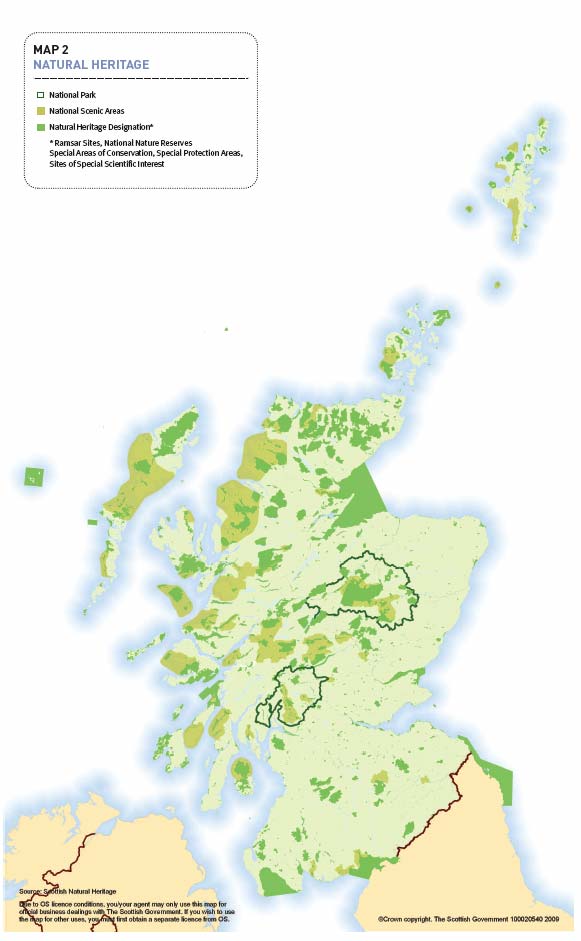
A GREENER SCOTLAND
48. The Government is committed to a greener Scotland. The Climate Change (Scotland) Bill sets a target of an 80% reduction in emissions by 2050 and an interim target for 2020. Key elements of the strategy for achieving a substantial reduction in emissions are greater energy efficiency, making the most of Scotland's renewable energy potential and encouraging power and heat generation from clean, low carbon sources. Planning and transport policies can make an important contribution by promoting more sustainable patterns of land use and travel. Development plans should include policies designed to promote sustainable development and contribute to the mitigation of, and adaptation to, climate change. Policies on design and building standards also have a crucial role to play in creating a more sustainable, resource efficient built environment.
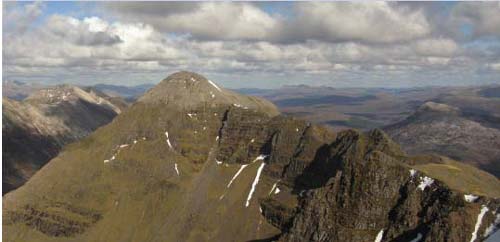 49. Much of the country is already of high environmental quality, with 26% of the land area covered by natural heritage designations (see Map 2). Human activity has important impacts on natural resources, including biodiversity and landscape. Sustainable economic and social development depend on healthy terrestrial and marine environments. Realising the vision set out in this framework will require a strong commitment to protecting and enhancing the natural, built and cultural environments, which are essential components of our quality of life and unique economic assets. The planning system has an important role to play in improving the environment, for example by strengthening green infrastructure, safeguarding and enhancing urban and rural biodiversity, and contributing to the improvement of water, air and soil quality. The environment is one of Scotland's chief assets - a source of natural capital that can drive broad-based sustainable growth. Economic development must be closely integrated with the promotion of environmental quality and the sustainable management of environmental resources. Areas of change must be seen as opportunities to build environmental capital and create high quality environments.
49. Much of the country is already of high environmental quality, with 26% of the land area covered by natural heritage designations (see Map 2). Human activity has important impacts on natural resources, including biodiversity and landscape. Sustainable economic and social development depend on healthy terrestrial and marine environments. Realising the vision set out in this framework will require a strong commitment to protecting and enhancing the natural, built and cultural environments, which are essential components of our quality of life and unique economic assets. The planning system has an important role to play in improving the environment, for example by strengthening green infrastructure, safeguarding and enhancing urban and rural biodiversity, and contributing to the improvement of water, air and soil quality. The environment is one of Scotland's chief assets - a source of natural capital that can drive broad-based sustainable growth. Economic development must be closely integrated with the promotion of environmental quality and the sustainable management of environmental resources. Areas of change must be seen as opportunities to build environmental capital and create high quality environments.
STRONGER, SMARTER, HEALTHIER AND SAFER COMMUNITIES
50. Good governance, community empowerment, education and local initiatives are essential elements of successful place-making. A distinctive identity, building on local traditions and developing local speciality products can help to strengthen the sense of pride and community which creates safe, healthy and sustainable places for living and working. Tackling derelict land, improving physical infrastructure and upgrading environmental quality can help to promote environmental justice and provide employment opportunities for those less equipped to participate in the knowledge economy. More local decision making will strengthen the ability of communities to respond to challenges, such as the local implications of climate change.
51. The Scottish Government's principal objective for regeneration policy is to promote the sustainable transformation of communities across Scotland by creating the right environment for private and public investment; through targeted action in the most disadvantaged communities, and by devolving power to the local level. It sees Urban Regeneration Companies ( URCs) as an effective means of harnessing the skills and resources of the public and private sectors in areas which offer opportunities for major change.
52. The decision-makers of the future are the children and young people of today. The Early Years Framework, Curriculum for Excellence and Getting it Right for Every Child are about equipping Scotland's young people to contribute effectively to the future shape of their country by enabling them to develop skills as successful learners and responsible citizens, able to make reasoned evaluations and develop informed ethical views of complex environmental, scientific and technological issues. Bringing that learning to bear in the context of this framework will help pupils towards a good understanding of, and regard for, their environment and world.
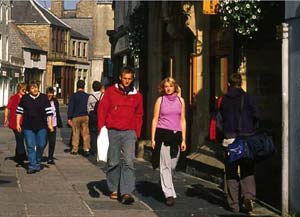 |
A DISTINCTIVE IDENTITY, BUILDING ON LOCAL TRADITIONS AND DEVELOPING LOCAL SPECIALITY PRODUCTS CAN HELP TO STRENGTHEN THE SENSE OF PRIDE AND COMMUNITY |
DEVELOPMENT STRATEGY
53. The main elements of the spatial strategy to 2030 are to:
- support strong, sustainable growth for the benefit of all parts of Scotland;
- promote development which helps to reduce Scotland's carbon footprint and facilitates adaptation to climate change;
- support the development of Scotland's cities as key drivers of the economy;
- support sustainable growth in the rural economy;
- conserve and enhance Scotland's distinctive natural and cultural heritage, and continue to safeguard internationally protected sites, habitats and species;
- expand opportunities for communities and businesses by promoting environmental quality and good connectivity;
- promote development which helps to improve health, regenerate communities and enable disadvantaged communities to access opportunities;
- strengthen links with the rest of the world;
- promote more sustainable patterns of travel, transport and land use;
- realise the potential of Scotland's renewable energy resources and facilitate the generation of power and heat from all clean, low carbon sources;
- encourage a sufficient supply of homes which are affordable in places where people want to live; and
- facilitate the implementation of the National Waste Management Plan including waste management targets.
The Cities and their Regions
54. The first National Planning Framework recognised the importance of our cities as key drivers of the economy. If our cities are to be competitive places attracting high value jobs and creative people, they must be well connected and able to offer distinctive, high quality environments and a first class quality of life. Good air links, the presence of centres of academic excellence and well-developed social and cultural facilities are essential parts of the package. Attractive, lively cities also help to support a strong tourism and leisure economy. Edinburgh and Glasgow are already major tourism gateways, while Aberdeen and Inverness are increasingly developing that role.
MAP 3 ECONOMIC DEVELOPMENT AND COMMUNITY REGENERATION
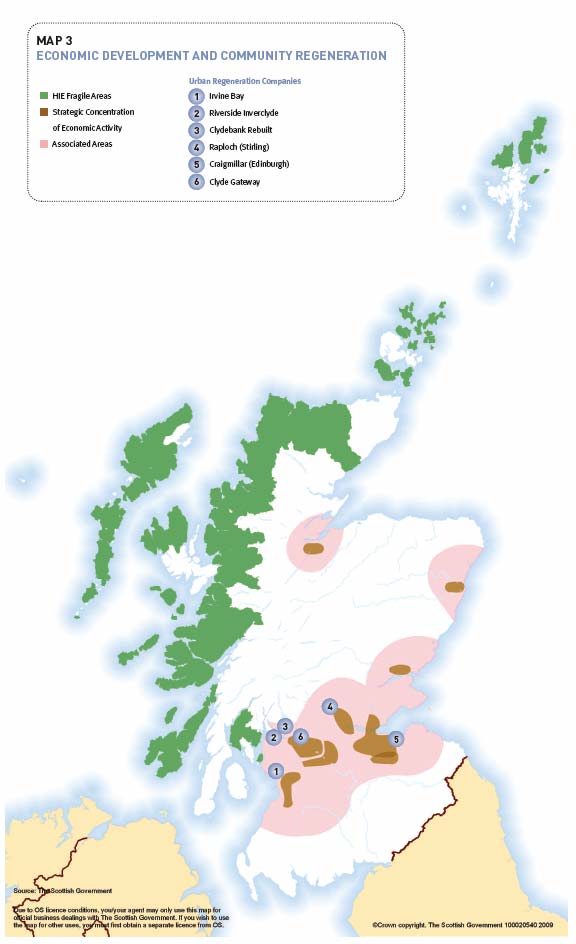
55. Successful cities need to be supported by strong regions well connected to urban facilities and offering residential amenity, good business environments and infrastructure, and social, recreational and cultural opportunities. We need an approach to city region development which promotes economic growth, environmental quality, connectivity, regional and local distinctiveness and the efficient and sustainable use of resources. Development patterns must be robust in relation to long-term climate change, taking account, for example, of changing levels of flood risk and vulnerability to the predicted increase in the frequency of extreme weather. Efficient public transport systems are needed to support increasingly flexible city region labour markets, and to help minimise reliance on carbon intensive modes of transport. For all our cities and their regions, the aim must be to develop spatial plans and other policies which encourage shifts to walking, cycling and public transport over the next 20 years. Development plans should also seek to achieve a net enhancement of landscape quality and biodiversity.
56. The Planning etc. (Scotland) Act 2006 provides for Strategic Development Plans ( SDPs) to be prepared for the city regions of Edinburgh, Glasgow, Aberdeen and Dundee. The restructuring of Scottish Enterprise and VisitScotland will facilitate strategic policy making at the city region level. The city region approach recognises that our cities are the hubs of wider regional economies and that the complementary assets of their surrounding towns and rural areas offer opportunities for a wide range of economic, cultural and recreational activities. It also provides the opportunity to develop extensive green networks connecting our inner urban areas with their surrounding rural environments, providing a wide range of social, health and environmental benefits.
57. Edinburgh and Glasgow are vital to Scotland's economic wellbeing. They are collaborating closely to exploit their scale and relative proximity and the strengths of their surrounding regions to create a single shared economic space of international significance. Aberdeen, Dundee and Inverness also have key roles as drivers of economic activity and it is essential that they are well connected to Edinburgh and Glasgow, their wider regions and the rest of the world. The rural areas which lie beyond the city regions have economic, environmental and cultural assets of enormous economic and community value. Good connectivity will again be critical in realising the full potential of these assets.
Sustainable Growth
58. Strategic concentrations of business activity and clusters of related industries are to be found in Central Ayrshire, the Clyde Corridor, Lanarkshire, Central Scotland, the Lothians and South Fife, Dundee, Aberdeen and the Inner Moray Firth (see Map 3). Within these broad areas, key locations which have been identified as offering substantial strategic growth potential are the Clyde Waterfront and Clyde Gateway, West Edinburgh, the Edinburgh Waterfront, the Upper Forth, the Dundee Waterfront, the Inverness to Nairn Corridor and the Pentland Firth. The economic successes of these areas depends on good links to the rest of Scotland and the wider world. It is therefore essential that investment in new or improved infrastructure reflects economic development priorities and the need to support sustainable growth.
59. Individual business locations need to be well connected with each other and readily accessible from residential areas by sustainable modes of travel. To ensure that Scotland is a good place to do business and an attractive tourism destination, we need to promote high quality environments and good transport interchange facilities at our air, rail and sea gateways.
60. The key industries on which the efforts of the Government are being focused are the life sciences, energy, financial services, tourism, creative industries, food and drink and electronic markets. In addition, Scottish Enterprise has identified textiles, aerospace, shipbuilding and marine technology, chemicals, construction and forestry as priority industries at a regional level. The planning system should promote opportunities to foster the development of synergistic business clusters, and facilitate the provision of supporting infrastructure.
61. The Government is committed to reducing regional disparities. This will involve targeted investment in connectivity and environmental quality to ensure that each part of Scotland is well placed to participate successfully in the modern economy. A more even spread of economic activity will help to relieve pressures in high growth areas such as Edinburgh, provide additional opportunities in areas such as Ayrshire, Inverclyde, West Dunbartonshire and Dundee, and improve the overall efficiency of the Scottish economy. Communities undergoing regeneration should enjoy good access to the opportunities created in strategic growth areas.
62. Primary production and land management in rural areas play a vital role in underpinning the food and drink, tourism and leisure and forest product sectors of the economy. The future of rural Scotland lies in a close alliance between economic diversification and environmental stewardship. Many rural areas can absorb more people without losing their environmental quality and modern communications technologies now make widely dispersed economic activity, including home-based businesses, a much more practical proposition. The space and environmental quality which rural Scotland can offer is at a premium in the developed world. High quality natural surroundings offering opportunities for a wide range of recreational activities can provide attractive locations for creative and knowledge-based businesses, including those based on Scotland's distinctive environment and culture. Scotland's two national parks are already demonstrating how environmental quality can be used to support economic and social development, and similar benefits can be achieved more widely in our National Scenic Areas.
 63. The Scottish Government is sponsoring a programme of research to inform a major summit on rural land use in the second half of 2009. Among the matters to be considered by the summit are how rural land use can contribute to sustainable growth and food production, and its role in the mitigation of climate change and the transition to a low carbon economy.
63. The Scottish Government is sponsoring a programme of research to inform a major summit on rural land use in the second half of 2009. Among the matters to be considered by the summit are how rural land use can contribute to sustainable growth and food production, and its role in the mitigation of climate change and the transition to a low carbon economy.
64. Higher education has a key role to play in developing the knowledge economy in rural areas. The UHI Millennium Institute with its campus at Beechwood in Inverness and constituent colleges throughout the Highlands and Islands, the Crichton University Campus in Dumfries and Heriot-Watt University's Borders Campus in Galashiels are excellent pioneering examples. While each is pursuing a different development model, all three are building new centres of expertise and creativity, providing high-level jobs, offering opportunities for people to study locally, developing international links and attracting students from around the world.
65. Energy is a major resource for rural areas. The Government is committed to realising the power generating potential of all renewable sources of energy. Development of onshore windfarms has been proceeding apace, but much of the longer-term potential is likely to lie with new technologies such as wave and tidal power, biomass and offshore wind. New high quality jobs are being created through developments such as the marine energy research centre on Orkney. The harvesting of Scotland's forests will provide a source of fuel for heat and power generation. Community-based renewable energy projects can make an important contribution to sustainable development in rural Scotland, particularly on the islands and in remoter mainland areas.
66. For many of our small and medium-sized towns, economic diversification must be a key objective. Encouraging a greater range of economic activity can help to reduce vulnerability to sectoral downturns, improve local investment levels and increase activity rates, spending power and vibrancy, so attracting more people to live and work in the area. Cultural, social and recreational facilities have a crucial role to play in maintaining community identity and morale. A commitment to local empowerment, place-making, environmental improvement and connectivity and a flexible, positive approach to land allocations and the use of buildings are important elements of a diversification strategy.
| MANY OFFICE-BASED ACTIVITIES ARE COMPATIBLE WITH RESIDENTIAL AND OTHER USES AND THEREFORE RELATIVELY EASY TO INTEGRATE INTO MIXED USE DEVELOPMENTS WITHIN THE EXISTING URBAN FABRIC. |
|
67. Tourism and leisure activities have an important contribution to make to the development of the economy. The Government is keen to attract international sporting and cultural events to Scotland. It is strongly supporting the city of Glasgow in hosting the 2014 Commonwealth Games. It is also continuing to support the conservation and promotion of the historic environment as an irreplaceable resource, a reflection of Scotland's cultural identity and a key feature of its appeal as a tourist destination. Our tourism industry will need to adapt to the challenges of a changing climate.
68. While there is generally an adequate supply of land for business and industrial development across Scotland, development plans must ensure that an effective supply of good quality serviced sites is maintained in the right locations to meet demand. The sites safeguarded for high amenity use are considered to be sufficient to meet potential requirements. Knowledge economy businesses generally need less space and land than the older industries. Many office-based activities are compatible with residential and other uses and therefore relatively easy to integrate into mixed use developments within the existing urban fabric. Against that background, the redevelopment of urban areas is likely to create opportunities for the reallocation of some of the current industrial land supply for housing and other uses.
69. Adequate supplies of minerals must be available to the construction industry if Scotland's infrastructure investment plans are to be realised and housing and business needs met. The identification of appropriate local sources of material will be particularly important in the Central Belt, where demand is likely to remain significant. Sourcing minerals locally reduces the distances over which they have to be transported.
70. Significant reductions in CO 2 emissions can be achieved through the development of carbon capture and storage technologies. The legacy of infrastructure and the geological knowledge gained from oil and gas production places Scotland in a strong position to exploit opportunities to reduce emissions by capturing CO 2 and storing it in depleted oil and gas fields, deep saline aquifers or coal seams. Studies estimate that geological structures beneath the North Sea have a storage capacity equivalent to many hundreds of years of CO 2 emissions from Scotland. The Government is working with Scottish-based companies and technology experts to develop Scotland's carbon capture and storage potential, including sub-sea storage options. Carbon capture and storage offers the opportunity for a new industry in the North Sea - prolonging the life of existing infrastructure and utilising the world class skills base in the offshore industry.
71. Carbon capture and storage have the potential to reduce net CO 2 emissions from power stations by up to 90%. Given that Scotland's three principal fossil fuel power stations (Longannet, Cockenzie and Peterhead) contribute up to 38% of Scotland's CO 2 emissions, this would represent a very significant reduction. Protection of our internationally important peatlands is also important, given their role as carbon reservoirs.
Housing
72. Housing is central to the Scottish Government's ambition to increase Scotland's rate of sustainable economic growth. By ensuring that we have enough houses of the right type, in the right place and at the right price, we can meet the housing needs of people and their families, increase workforce mobility and enhance economic competitiveness. In addition, the house-building industry makes a substantial contribution to the economy and provides significant employment opportunities, both directly and indirectly.
73. The Scottish Government has set out its vision of a housing system which delivers more houses, helps create sustainable communities, meets higher environmental standards, provides wider choice and offers better value for money. In June 2008, the Government announced major reforms designed to deliver lasting improvements throughout Scotland's housing system and confirmed the national ambition, shared with local authorities, to secure a substantial long-term increase in housing supply to meet housing need and demand. That ambition is at the heart of the new guidance on Local Housing Strategies published by the Scottish Government and CoSLA (Convention of Scottish Local Authorities) and the Government's planning policy for housing.
74. In the immediate term, the credit crunch which emerged during 2007 and the ensuing international financial crisis have had a significant impact on Scotland's housing market. New housing supply has dropped, house price growth has reversed and the availability of mortgage finance has become more constrained. It has become clear that the effects of the rapid downturn in economic circumstances in 2008 will be felt for a number of years, with impacts in the short to medium term that inhibit overall supply and potentially shift significantly the patterns of need and demand for different tenures and house types.
75. However, notwithstanding the consequences of the current downturn, there remains a pressing need for the planning system to help to deliver growth in the supply of new homes throughout urban and rural Scotland to respond to long-term housing pressures and to improve the affordability, stability and fairness of Scotland's housing system. That response needs to address the planning requirements for affordable housing, particularly in areas like Edinburgh and the Lothians, Perth and Kinross, Highland and Argyll and Bute and some areas around Glasgow (East Dunbartonshire, South Lanarkshire and East Renfrewshire) where pressure on affordable housing is expected to continue.
| THE SCOTTISH GOVERNMENT HAS SET OUT ITS VISION OF A HOUSING SYSTEM WHICH DELIVERS MORE HOUSES, HELPS CREATE SUSTAINABLE COMMUNITIES, MEETS HIGHER ENVIRONMENTAL STANDARDS, PROVIDES WIDER CHOICE AND OFFERS BETTER VALUE FOR MONEY. | |
76. It is through the planning system that housing need and demand are identified and addressed at the regional and local level. In that context, implementation of the recently reformed and modernised housing and planning delivery framework is fundamental, both to supporting a recovery in house-building and achieving a long-term increase in housing supply. The new framework brings together regional and local housing and planning systems to ensure that the right numbers of houses are built in the right places.
77. This new approach requires a whole market perspective and co-ordinated delivery through the new development plan process, local housing strategies and strategic housing investment plans, supported by an assessment of housing need and demand across housing market areas. It is based on collaboration between local authorities at a regional level - particularly across areas of wider strategic significance for housing growth such as the Edinburgh housing market area. This will allow constituent local authorities to build a stronger, more strategic evidence base and take a broader view of the options for increasing the supply of houses of the right type and tenure where they are needed most.
Sustainable Communities
78. Creating attractive, healthy, accessible and sustainable places can make an important contribution to meeting regional housing and economic needs and improving the quality of the environment. Under its Scottish Sustainable Communities Initiative ( SSCI), the Government invited proposals for the creation of sustainable communities as exemplars of 21st Century low-impact development. The Initiative encourages an approach to development which is environmentally responsible, to create places which are designed and built to last and to demonstrate what can be achieved. Proposals which embody the principles of the SSCI, reflecting National planning policy, should help to raise the bar in terms of design and environmental quality and result in places with a coherent identity. They will be developments which incorporate a mix of tenures and house types, including affordable homes; integrate land uses, including recreational and amenity open space; include measures to encourage active and sustainable travel, including walking and cycling; and make innovative use of renewable and clean energy technologies.
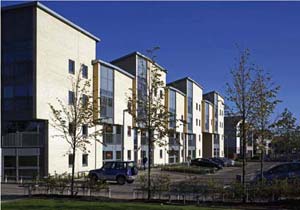 |
IT IS THROUGH THE PLANNING SYSTEM THAT HOUSING NEED AND DEMAND ARE IDENTIFIED AND ADDRESSED AT THE REGIONAL AND LOCAL LEVEL. |
Built Environment
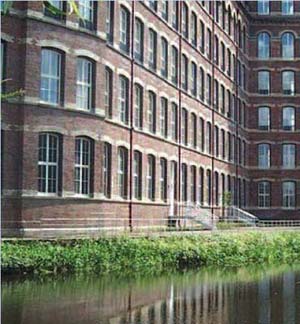 79. Better energy efficiency in buildings and more dispersed patterns of power and heat generation have key roles to play in creating a more sustainable built environment. Improving energy management and building efficiency are widely recognised as the easiest and most cost-effective means of reducing CO 2 emissions. The Scottish Government intends to introduce revised energy standards for buildings in the Spring of 2010, implementing the recommendations of the Building Standards Advisory Committee on emission reductions for dwellings and non-domestic buildings and some of the recommendations of the Sullivan Report on A Low Carbon Building Standards Strategy for Scotland.
79. Better energy efficiency in buildings and more dispersed patterns of power and heat generation have key roles to play in creating a more sustainable built environment. Improving energy management and building efficiency are widely recognised as the easiest and most cost-effective means of reducing CO 2 emissions. The Scottish Government intends to introduce revised energy standards for buildings in the Spring of 2010, implementing the recommendations of the Building Standards Advisory Committee on emission reductions for dwellings and non-domestic buildings and some of the recommendations of the Sullivan Report on A Low Carbon Building Standards Strategy for Scotland.
80. The application of appropriate planning, design and building policies can achieve more sustainable urban forms and much higher energy efficiency and emission standards in new development. Modifying our existing built environment to reduce emissions and adapt to climate change will be a much greater challenge. Some 20th Century residential developments promote high car dependency and may require substantial, imaginative reworking. In some areas it will be possible to harness energy from waste or the heat produced by power stations or industry to develop local heat networks. Changes which reduce reliance on the car and encourage walking and cycling can deliver wider environmental benefits such as enhanced amenity, improved water, soil and air quality and greater biodiversity. However, it will be important to ensure that the pursuit of global environmental objectives does not undermine locally valued features of the environment. Our built heritage, including urban conservation areas, will need sensitive treatment. The planning system has an important role to play in anticipating and managing the local impacts of change to more sustainable patterns of urban living.
81. The promotion of high density, compact cities is one important response to the challenge of climate change. Scotland's cities are already relatively compact by international standards. They offer short travel-to-work distances and in Edinburgh and Glasgow the majority of employed residents travel to work by means other than the private car. However, not everyone in Scotland lives in cities. A third of our population lives in small and medium-sized towns and large parts of rural Scotland have low population densities and dispersed settlement patterns. We need to develop a range of models of sustainable development to reflect Scotland's geographical diversity.
82. Planning authorities will need to develop strategies for more sustainable patterns of development which take account of climate change predictions. Measures such as reducing transport emissions and producing heat and power from renewable sources will need to be combined with an understanding of changing development capacity, due to factors such as long-term flood risk, the increased frequency of extreme weather and the need to reduce and better manage demand for energy and water.
83. The Scottish Government is committed to improving air quality and is giving particular priority to addressing problems in designated Air Quality Management Areas ( AQMAs). Where a proposed development could have significant impacts on air quality, close co-operation between planning authorities and those with responsibility for air quality and pollution control will be essential.
84. Strategic noise mapping and the preparation of Noise Action Plans are now a requirement under the EU Environmental Noise Directive. Their aim is to manage and reduce environmental noise where necessary and preserve environmental noise quality where it is good, with the initial focus on the Edinburgh and Glasgow conurbations and major roads (such as the M74 and A82), railways and airports. Noise mapping and consultative action plans have been completed and published and a second more comprehensive phase of action planning will take place in 2012-2013.
Regeneration
85. Realising the potential of people and places is at the heart of the Scottish Government's approach to regeneration. Successful regeneration demands a combination of economic development, housing and environmental investment, better public services, improved workforce skills, support for community involvement, a commitment to environmental quality and good design; and respect for local identity and the historic features which contribute to it. Scotland has seen a substantial range of regeneration initiatives, many of which have been successful, but major challenges remain.
86. The £435m Fairer Scotland Fund is assisting Community Planning Partnerships to regenerate disadvantaged areas, tackle individual poverty and overcome barrier to employment. Although deprivation exists in all parts of Scotland, there are significant concentrations in the Central Belt and urban areas, with 34% of the most deprived areas in Glasgow, 9% in North Lanarkshire, 7% in Edinburgh and 6% in South Lanarkshire. There is significant deprivation in the former coalfield areas. Rural areas also experience more dispersed patterns of poverty and disadvantage. For example, Aberdeenshire, Argyll and Bute, the Highlands and Islands and the South of Scotland have particular problems arising from poor access to services.
87. The Government is supporting 6 urban regeneration companies ( URCs) - Clyde Gateway, Clydebank Rebuilt, Irvine Bay, Riverside Inverclyde, Craigmillar in Edinburgh and Raploch in Stirling (see Map 3). Each URC will operate for 10 to 20 years. The Clyde Corridor, encompassing the major regeneration initiatives in the Clyde Gateway and along the Clyde Waterfront, is the national strategic regeneration priority. Given Glasgow's high share of concentrated deprivation, Clyde Corridor projects have the potential to impact positively on Scotland's overall levels of poverty and deprivation and make a substantial contribution to regional economic growth.
88. In January 2009, the Scottish Government announced a new £60 million Town Centre Regeneration Fund to complement efforts already underway to renew and improve town centres and local high streets throughout Scotland. The success of the Scottish Land Fund and its successor the Growing Community Assets fund, the Highlands and Islands Community Energy Company and the growing importance of social enterprise, illustrate the potential for stimulating regeneration activity on the back of community ownership and engagement. A range of measures are being undertaken to build the capacity of community councils to work alongside other community organisations and engage effectively with their local authority, public bodies and the community they represent; while the Scottish Government's strategic fund for targeted action to tackle poverty and deprivation will help to transform the prospects of communities across the country.
Vacant and Derelict Land
89. Across Scotland 10,800 ha. of land is classed as vacant or derelict. In parts of the Lowlands, particularly in West Central Scotland, the closure of older industries has left degraded landscapes, poor environments and significant areas of vacant and derelict land, some of it contaminated. Vacant and derelict land is a wasted resource and causes blight, sometimes exacerbating the difficulties of already deprived communities. The Government wants to see this land brought back into productive use for housing, for economic purposes and to create attractive environments. Much progress has already been made. Major land reclamation in former mining areas and projects such as the Central Scotland Forest and the restoration of the Forth and Clyde and Union Canals have improved the environment and opened up new opportunities for economic development and recreation. However, more can be done. The Scottish Government has allocated £36.6 million for the period 2008 to 2011 to Glasgow, Lanarkshire, Dundee and Highland to address the largest concentrations of vacant and derelict land.
MAP 4 STRATEGIC FOREST RESOURCE
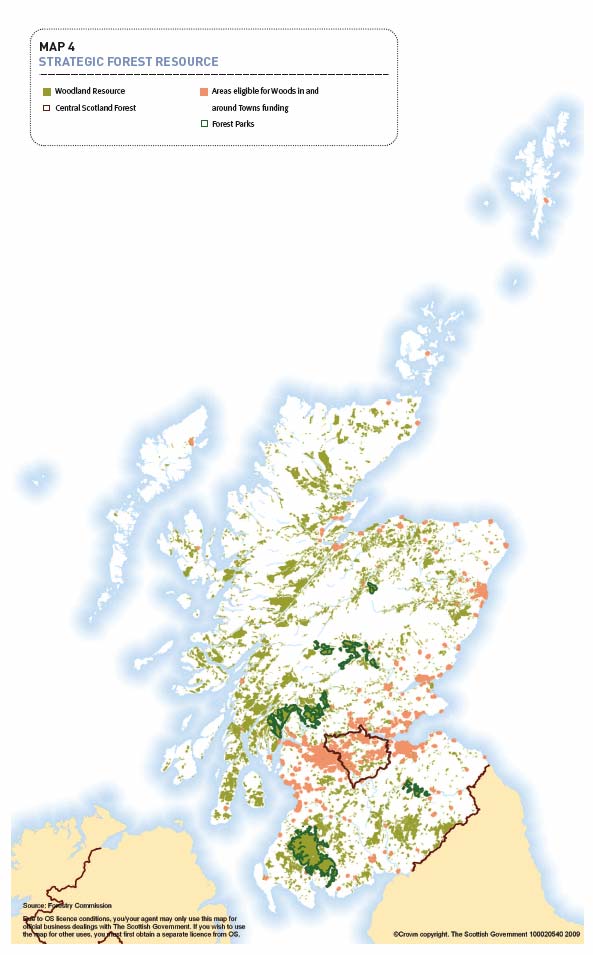
90. The statutory regime for cleaning up contaminated land provides for local authorities to identify sites and bring about their remediation. To facilitate the reuse of brownfield sites and the regeneration of urban areas the Government intends to provide a route for the remediation of sites of low development value or where there are barriers to redevelopment.
91. National planning policy encourages the reuse of previously developed land in preference to greenfield land. However, while the highest levels of growth are expected in the East, vacant and derelict land is heavily concentrated in the West. There is therefore potentially much greater scope for accommodating new development on previously used land in Glasgow and the Clyde Valley and Ayrshire than in Edinburgh and the Lothians, Stirling and the North East, where a higher proportion of new development will have to be on greenfield sites.
Greening the Environment
92. The restoration of vacant and derelict land, former mineral workings and landfill sites offers important strategic opportunities for improving the environment and increasing biodiversity through the development of green networks and the expansion of urban, amenity and community woodlands. Indeed, vacant, derelict and even contaminated land can have greenspace and natural heritage value even without remediation. The Scottish Forestry Strategy contains a commitment to expanding and improving the quality of woodlands around settlements to provide an improved landscape setting and widen recreational opportunities. Local authorities play an important role in promoting open space networks, facilitating countryside access and developing core path networks.
93. The Scottish Forest Strategy highlights the fact that climate change and the need to develop renewable sources of energy have become major drivers for extending woodland cover. It also draws attention to the contribution which forestry can make to urban regeneration and the benefits it can offer in terms of biodiversity, amenity, community involvement and better health. It aims to expand woodland cover from 17% to 25% of Scotland's land area and sets the forestry sector a target of delivering annual carbon savings of 1.0 MtC (Million tonnes of carbon) by 2020. Woodland expansion is likely to be focused on poorer quality agricultural land. Research for the Forestry Commission indicates that there is potential to increase woodland cover in a wide range of rural and urban fringe areas throughout Scotland. Local authorities will have a key role to play in guiding woodland expansion locally through a new generation of forestry and woodland strategies. Strategic forest resources are shown on Map 4.
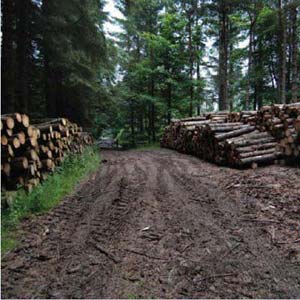 94. Realisation of Scottish Forest Strategy objectives will require new planting of around 10,000 ha. per annum and a significant reduction in the loss of existing woodland. The Scottish Government will therefore only support the removal of woodland where it would achieve significant and clearly defined public benefits. Where woodland is removed in association with development there will be a strong presumption in favour of compensatory planting. It is important that woodland expansion is managed so that the environmental benefits are not reduced as a result of adverse impacts on other assets, including water resources, landscape and cultural heritage.
94. Realisation of Scottish Forest Strategy objectives will require new planting of around 10,000 ha. per annum and a significant reduction in the loss of existing woodland. The Scottish Government will therefore only support the removal of woodland where it would achieve significant and clearly defined public benefits. Where woodland is removed in association with development there will be a strong presumption in favour of compensatory planting. It is important that woodland expansion is managed so that the environmental benefits are not reduced as a result of adverse impacts on other assets, including water resources, landscape and cultural heritage.
95. In the Central Belt there is an opportunity to build on initiatives such as the Ayrshire and Glasgow and Clyde Valley Green Networks, the Central Scotland Forest, the Millennium Canal Link, the Falkirk Helix and the Edinburgh and the Lothians greenspace and forest habitat networks to create a Central Scotland Green Network capable of delivering a step change in the quality of the environment for the benefit of people, landscape and nature. The creation of a Central Scotland Green Network will complement improvements in rail, road and communications infrastructure, making Central Scotland a more attractive place to live in, do business and visit. Improving the health and resilience of the natural environment will help it to adapt to climate change. A well-planned increase in woodland cover can substantially enhance the landscape settings of our towns and cities, bring vacant and derelict land back into beneficial use, improve biodiversity and amenity and help to absorb CO 2. Improvements can also be made to networks of other habitats, including wetlands, to counter fragmentation and assist species migration. The development of footpath and cycleway networks and other facilities and attractions will contribute to a more sustainable transport network and expand the range of recreational opportunities close to major centres of population, helping to encourage active travel and healthier lifestyles. The greening agenda will vary substantially in different parts of Central Scotland, providing tailored responses to local and regional challenges and opportunities.
96. There is also a need to restore and strengthen links between key water systems and woodlands on a national canvas. Building environmental capital at a landscape scale can deliver important benefits for the economy and communities. The creation of national ecological networks, potentially encompassing large strategic habitat restoration projects, could make a major contribution to safeguarding and enhancing biodiversity and landscape, make it easier for species to adapt to climate change and create a better environment and new opportunities for local communities. Major linear infrastructure projects such as railways, roads, pipelines and cables should be seen as opportunities to strengthen green infrastructure and ecological networks. River basin management plans should highlight opportunities to enhance the ecological health of the water environment.
Landscape and Cultural Heritage
97. In their rich diversity, Scotland's landscapes are a national asset of the highest value. They provide the context for our daily lives and are a major attraction for our tourist visitors. They are settings for outdoor recreation and are valued as a source of refreshment and inspiration by many. Nationally important landscape characteristics include openness, intervisibility, perceived naturalness, and remoteness. Areas considered of national significance on the basis of their outstanding scenic interest are designated as National Scenic Areas (See Map 2).
98. Our landscapes have been shaped by human activity since prehistoric times. Natural and cultural landscapes and the historic fabric of our cities, towns and rural areas are important aspects of our national identity and the distinctive character of each part of Scotland. Edinburgh's Old and New Towns, New Lanark, St. Kilda, the Neolithic monuments of Orkney and the Antonine Wall have been accorded an international status as World Heritage sites. The Lochaber and North West Highland Geoparks are part of the UNESCO European Geopark Network. Natural and historic environments help create a sense of place, contribute to the quality of life and are a rich resource for tourism and leisure, our creative industries, education, and national and regional marketing. They can also provide a focus for regeneration. The Scottish Government is committed to protecting, promoting and supporting the sustainable management of these key assets.
99. Landscapes evolve continuously in response to climatic, economic, social and technological change. As the European Landscape Convention recognises, their value extends beyond those protected by formal designations to all areas which reflect the interaction of natural processes with human activities. Landscape and visual impacts will continue to be important considerations in decision-making on developments. The cumulative effects of small-scale changes require as much attention as large developments with immediately obvious impacts. Some of Scotland's remoter mountain and coastal areas possess an elemental quality from which many people derive psychological and spiritual benefits. Such areas are very sensitive to any form of development or intrusive human activity and great care should be taken to safeguard their wild land character.
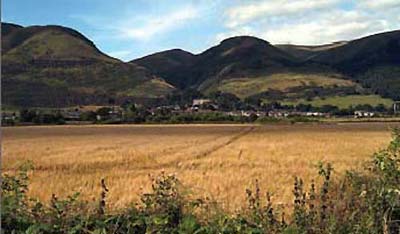 |
NATURAL AND HISTORIC ASSETS HELP CREATE A SENSE OF PLACE |
100. Major urban regeneration projects, the changes taking place in the rural economy, the expansion of woodland cover and the restructuring of our forests offer strategic opportunities to enhance landscape quality and repair past damage. We will see significant changes to some of our landscapes to help deal with contemporary challenges such as climate change. However, even changes which offer clear environmental benefits, such as the expansion of woodland cover, require careful design and management to avoid adverse impacts. The aim must be to build environmental capital and pass well-managed, high quality landscapes on to future generations.
Marine and Coastal Environment
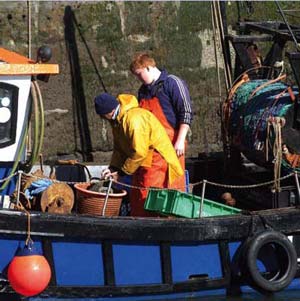 101. Our marine and coastal environment is a unique asset which helps to define Scotland's character and supports a wide range of economic activities, including fishing, aquaculture, energy production and tourism. It also supports internationally important seabird and marine mammal populations and rare seabed ecosystems. The Scottish Government is taking forward Scotland's first Marine Bill, which includes provisions for a new marine planning system, improved protection for marine wildlife and the creation of Marine Scotland to act as a champion for Scotland's seas. It has been agreed with the UK Government that Scottish Ministers will have responsibility for marine planning out to 200nm (nautical miles) and will participate in a UK-wide approach to marine planning. Marine Scotland will take forward the development of a Scottish National Marine Plan which will be consistent with the strategic priorities set out in this Framework and any agreed UK Marine Policy Statement.
101. Our marine and coastal environment is a unique asset which helps to define Scotland's character and supports a wide range of economic activities, including fishing, aquaculture, energy production and tourism. It also supports internationally important seabird and marine mammal populations and rare seabed ecosystems. The Scottish Government is taking forward Scotland's first Marine Bill, which includes provisions for a new marine planning system, improved protection for marine wildlife and the creation of Marine Scotland to act as a champion for Scotland's seas. It has been agreed with the UK Government that Scottish Ministers will have responsibility for marine planning out to 200nm (nautical miles) and will participate in a UK-wide approach to marine planning. Marine Scotland will take forward the development of a Scottish National Marine Plan which will be consistent with the strategic priorities set out in this Framework and any agreed UK Marine Policy Statement.
102. Key pressures on the marine and coastal environment include competition for marine resources, urban expansion, new infrastructure and energy-related development, shipping activity and land claim. In some areas, sea level rise will result in an increased risk of coastal flooding. Our coastal landscapes and seascapes offer opportunities for a very wide range of sustainable tourism and leisure activities and the potential to develop a national coastal trail. The planning system should help to ensure that marine resources are developed sustainably, with development taking account of effects on environmental resources, the capacity of marine and coastal areas, with adverse effects minimised and mitigated. The care and management of the coastal environment should build on the work of the seven Local Coastal Partnerships and marine planning pilots to achieve more integrated outcomes for coast and sea. Where wetland habitat would be lost as a result of development or sea level rise, replacement through coastal realignment should be pursued.
| OUR MARINE AND COASTAL ENVIRONMENT IS A UNIQUE ASSET WHICH HELPS TO DEFINE SCOTLAND'S CHARACTER AND SUPPORTS A WIDE RANGE OF ECONOMIC ACTIVITIES, INCLUDING FISHING, AQUACULTURE, ENERGY PRODUCTION AND TOURISM. | |
There is a problem
Thanks for your feedback

